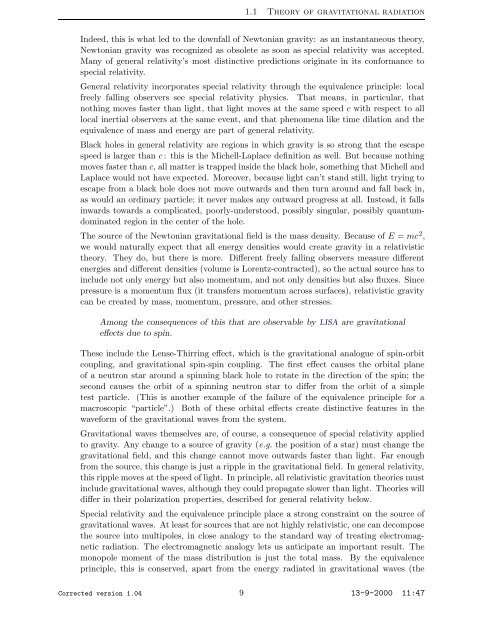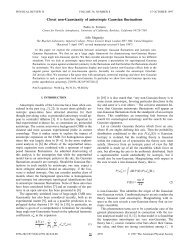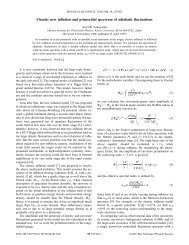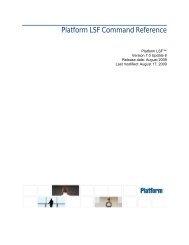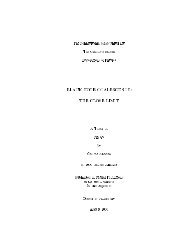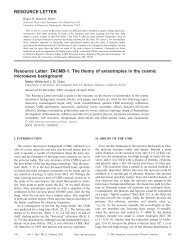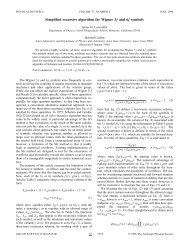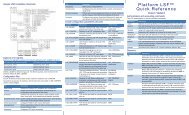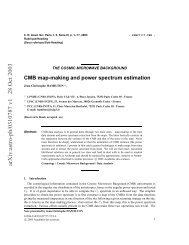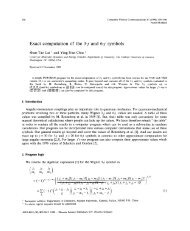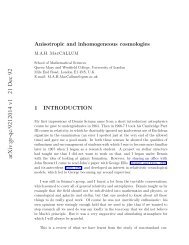LISALISA - iucaa
LISALISA - iucaa
LISALISA - iucaa
Create successful ePaper yourself
Turn your PDF publications into a flip-book with our unique Google optimized e-Paper software.
1.1 Theory of gravitational radiation<br />
Indeed, this is what led to the downfall of Newtonian gravity: as an instantaneous theory,<br />
Newtonian gravity was recognized as obsolete as soon as special relativity was accepted.<br />
Many of general relativity’s most distinctive predictions originate in its conformance to<br />
special relativity.<br />
General relativity incorporates special relativity through the equivalence principle: local<br />
freely falling observers see special relativity physics. That means, in particular, that<br />
nothing moves faster than light, that light moves at the same speed c with respect to all<br />
local inertial observers at the same event, and that phenomena like time dilation and the<br />
equivalence of mass and energy are part of general relativity.<br />
Black holes in general relativity are regions in which gravity is so strong that the escape<br />
speed is larger than c: this is the Michell-Laplace definition as well. But because nothing<br />
moves faster than c, all matter is trapped inside the black hole, something that Michell and<br />
Laplace would not have expected. Moreover, because light can’t stand still, light trying to<br />
escape from a black hole does not move outwards and then turn around and fall back in,<br />
as would an ordinary particle; it never makes any outward progress at all. Instead, it falls<br />
inwards towards a complicated, poorly-understood, possibly singular, possibly quantumdominated<br />
region in the center of the hole.<br />
The source of the Newtonian gravitational field is the mass density. Because of E = mc 2 ,<br />
we would naturally expect that all energy densities would create gravity in a relativistic<br />
theory. They do, but there is more. Different freely falling observers measure different<br />
energies and different densities (volume is Lorentz-contracted), so the actual source has to<br />
include not only energy but also momentum, and not only densities but also fluxes. Since<br />
pressure is a momentum flux (it transfers momentum across surfaces), relativistic gravity<br />
can be created by mass, momentum, pressure, and other stresses.<br />
Among the consequences of this that are observable by LISA are gravitational<br />
effects due to spin.<br />
These include the Lense-Thirring effect, which is the gravitational analogue of spin-orbit<br />
coupling, and gravitational spin-spin coupling. The first effect causes the orbital plane<br />
of a neutron star around a spinning black hole to rotate in the direction of the spin; the<br />
second causes the orbit of a spinning neutron star to differ from the orbit of a simple<br />
test particle. (This is another example of the failure of the equivalence principle for a<br />
macroscopic “particle”.) Both of these orbital effects create distinctive features in the<br />
waveform of the gravitational waves from the system.<br />
Gravitational waves themselves are, of course, a consequence of special relativity applied<br />
to gravity. Any change to a source of gravity (e.g. the position of a star) must change the<br />
gravitational field, and this change cannot move outwards faster than light. Far enough<br />
from the source, this change is just a ripple in the gravitational field. In general relativity,<br />
this ripple moves at the speed of light. In principle, all relativistic gravitation theories must<br />
include gravitational waves, although they could propagate slower than light. Theories will<br />
differ in their polarization properties, described for general relativity below.<br />
Special relativity and the equivalence principle place a strong constraint on the source of<br />
gravitational waves. At least for sources that are not highly relativistic, one can decompose<br />
the source into multipoles, in close analogy to the standard way of treating electromagnetic<br />
radiation. The electromagnetic analogy lets us anticipate an important result. The<br />
monopole moment of the mass distribution is just the total mass. By the equivalence<br />
principle, this is conserved, apart from the energy radiated in gravitational waves (the<br />
Corrected version 1.04 9 13-9-2000 11:47


